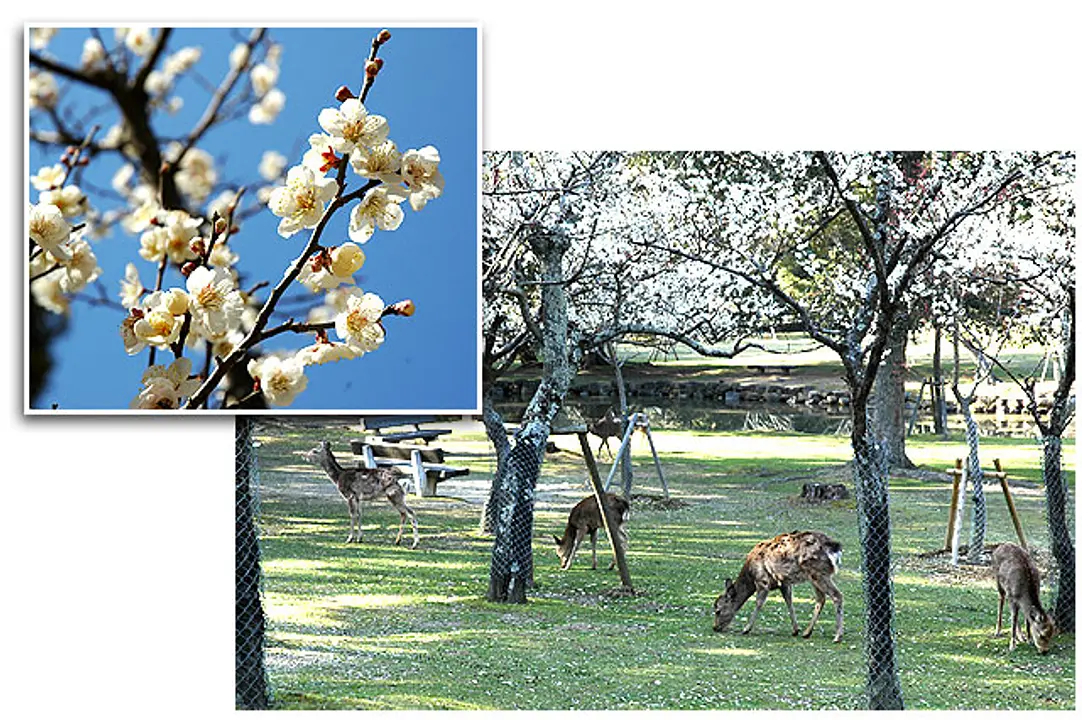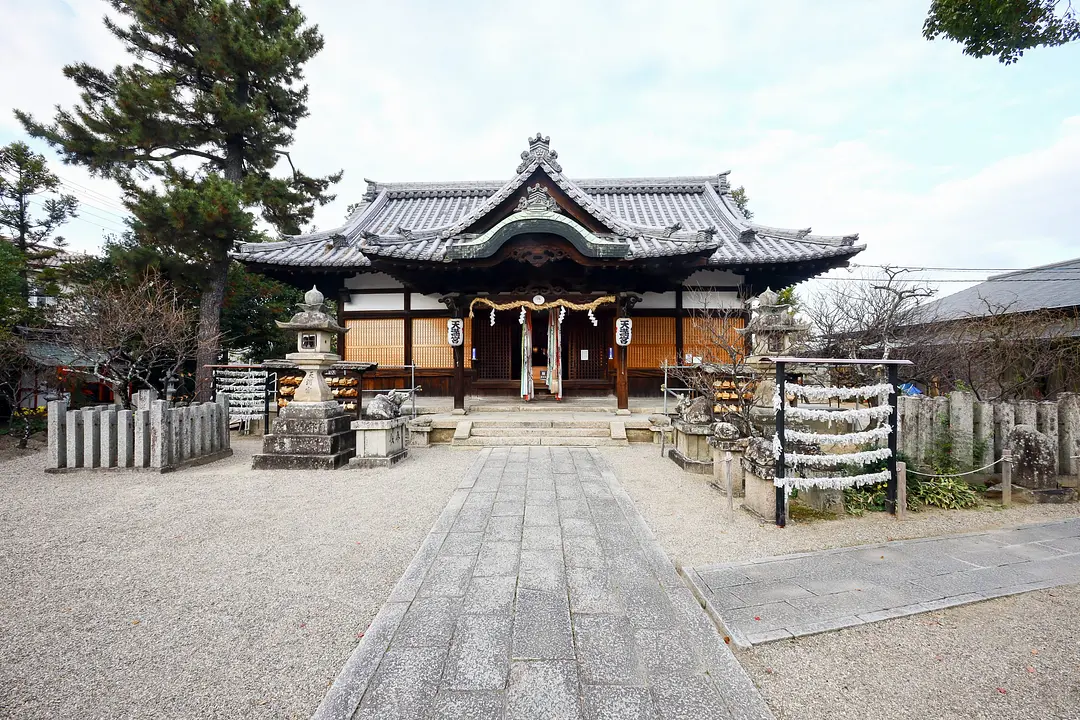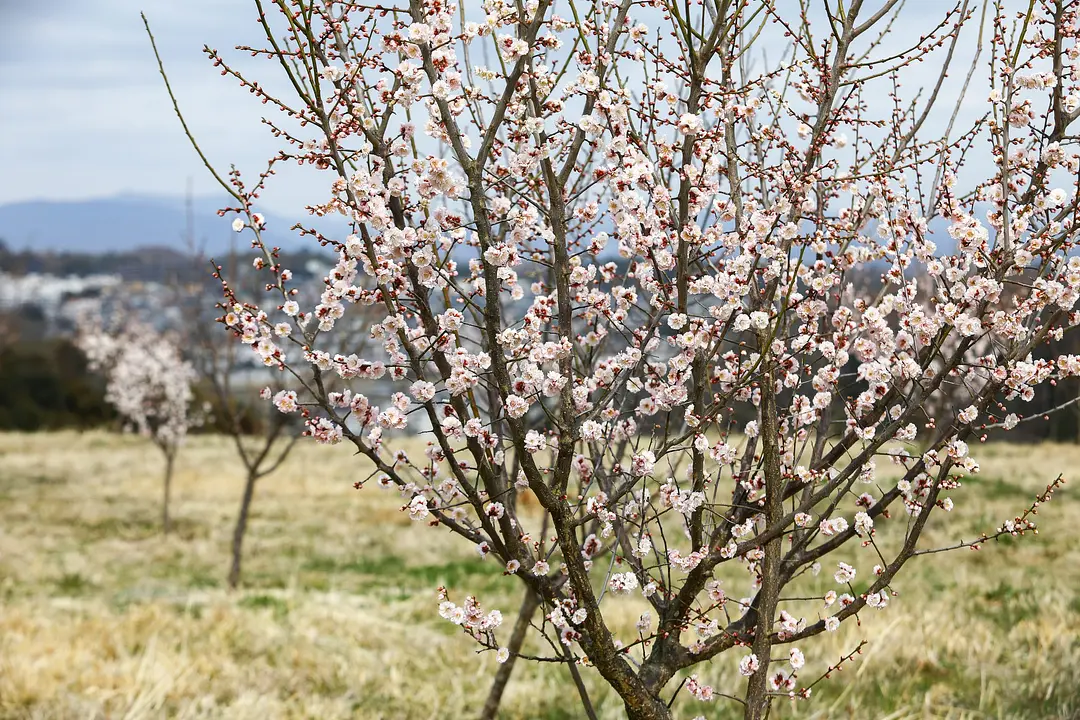Model Course
「梅」 の花を楽しむスポット
<見頃:2月中旬~3月中旬>観梅と一緒に歴史を体感しませんか
| Areas |
|---|
Model Course
Kataoka Plum Grove

Kataoka Plum Grove
plum grove in Nara Park. As you walk from the first torii gate of the approach to Kasuga Taisha Shrine in the direction of the culinary inn "Edo San", you will soon come to a plum grove of about 250 trees.
Kasuga Taisha Shrine Garden - Manyo Botanical Garden
Kasuga Taisha Shrine Garden - Manyo Botanical Garden
The manyo botanical garden with the longest history in Japan. Around 300 species of plants appearing in the Man-yo-shu (Japan's oldest collection of poems) are grown here, and each representative poem is written next to the plant with which it coincides. With an area of 30,000 hectares, within the botanical garden there is the “Fuji-no-sono” garden, with over 200 wisteria plants, the symbol of Kasuga Taisha Shrine, of around 20 different varieties. There is also the "Tsubaki-en" garden and the "Hana-shobu-en" garden where one can observe many precious seasonal plants of ancient times.
Sugawara Tenmangu Shrine

Sugawara Tenmangu Shrine
The oldest tenmangu (a shrine dedicated to the spirit of Sugawara-no Michizane) in Japan, this shrine is located at the origin of Sugawara-no Michizane’s clan, and enshrines Sugawara-no Michizane himself. A historical site that is said to be the pond of Sugawara-no Michizane’s ubuyū (first bath), is approximately 100 meters to the east of the shrine. Of course, the God of Studies (Sugawara-no Michizane) is enshrined, but a fude-zuka (a mound of worn-out writing brushes) which receives prayers to improve penmanship is also enshrined on the grounds.
Oiwake Plum Grove

Oiwake Plum Grove
The plum grove has been restored for the first time in 10 years. (February 2016) Oiwake Plum Grove was able to plant 400 plum trees in collaboration with SPS Kizunaya. The plum trees planted by the previous generation over 50 years ago still remain, and each one is blooming with small flowers. (The photo shows the state of the plum orchard before reconstruction.) In 2019, the "Oiwake Plum Garden Plum Viewing Party" will be held from March 1st (Friday) to March 17th (Sunday). 10:00-15:00 / Admission fee: 300 yen (free for junior high school students and under) / Food stalls will be set up on Saturdays and Sundays.
(Place of scenic beauty)Tsukigase Plum Grove
(Place of scenic beauty)Tsukigase Plum Grove
The flower that first brings us the feeling of early spring is plum blossoms. The Satsuki River flows through the center of Tsukigase, a famous spot for plum blossoms, creating a beautiful valley, and about 10,000 plum trees line both banks. This area is called ``Tsukigase Baikei'' and was designated as a scenic spot in 1921. During the season, you can see people strolling along the river to see the plum blossoms. There are also people walking along the path along Shinpukuji Temple and Tenjin Shrine, admiring the dazzling sight of countless plum blossoms blooming. While taking a break, you can enjoy plum gourmet food, rice cakes, mountain delicacies, tea, and more at the shop. It takes about 1 hour by car from central Nara City to Tsukigase Bairin, or about 1.5 to 1 hour 50 minutes by bus from JR/Kintetsu Nara Station. Why not go on a short trip while also taking a walk?